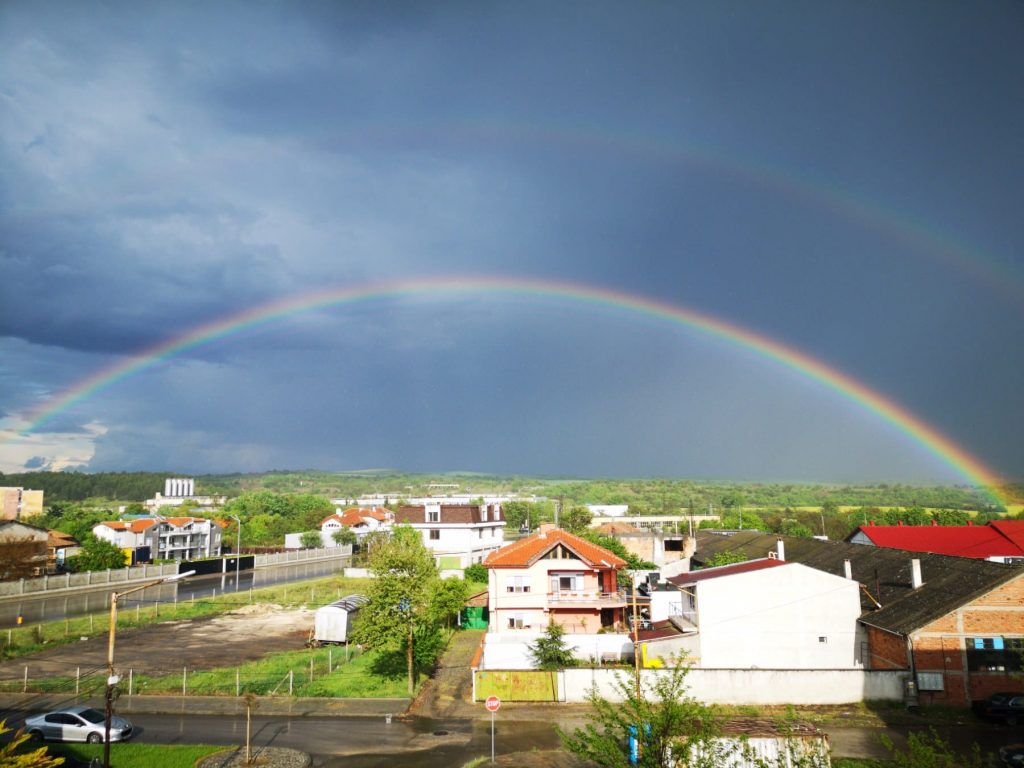Disclaimer
What’s the weather tomorrow? – The information on this website is provided without any guarantee as to its accuracy or suitability for a particular purpose. Data is vulnerable to errors, crashes and other defects. We take no responsibility for any decisions made based on the content presented on this website.
Why is it important to know what the weather will be like tomorrow?
Tomorrow’s weather is an important factor that can affect our daily lives. It is extremely important to know the weather so that we can take appropriate precautions and protect ourselves from unexpected situations. Here are some reasons why it’s important to know what the weather will be like tomorrow:
One of the biggest reasons why it’s important to know what the weather will be like tomorrow is safety. For example, if a severe weather warning is issued, people living near water or in vulnerable areas should evacuate their homes or take appropriate protective measures. On the other hand, a sunny day can lead to people being active outdoors, perhaps in a public place like the beach or a park.
Tomorrow’s weather, planning: For proper planning it is also important to know the weather tomorrow. If you are planning an outdoor activity or excursion, you should check in advance whether the weather is suitable and safe. For example, if it is going to rain tomorrow, it is better to plan an indoor activity day instead of going outside.
Tomorrow’s weather, health: It is also important to know tomorrow’s weather to protect your health. If you are prone to certain weather conditions, such as asthma or allergies, you can take appropriate steps to protect yourself. For example, if high humidity is forecast for tomorrow, asthmatics should make sure to have their medication on hand and stay indoors.
Tomorrow’s weather, economic impact: Knowing tomorrow’s weather can also have an impact on the economy. Farmers need to know the weather to protect their crops and livestock. Businesses that rely on outdoor activities need to know the weather in advance to plan and prepare for their activities.
In general, it is important to know what the weather will be like tomorrow to protect our safety, health, plans and economic activities. There are many sources that can provide you with accurate forecasts for your area, and it is a good idea to use these sources regularly to prepare for future weather conditions.
Global weather-related disasters
In recent decades, the number of weather-related disasters has increased significantly worldwide. As a result of climate change and other human activities, weather events such as floods, droughts, storms and wildfires are increasing and becoming more frequent. These disasters have devastating impacts on the environment, the economy and the lives of people around the world.
One of the most devastating consequences of weather-related disasters is the loss of human life. Every year thousands of people die as a result of floods, storms and other disasters. In addition, entire communities are destroyed by floods, landslides or storms, leading to homelessness and loss of property. The environmental impact can also be enormous, as disasters such as wildfires and droughts can cause irreparable damage to the environment and ecosystem.
The economic impact of weather-related disasters is also significant. For example, if a region experiences severe drought, agricultural crops may be destroyed, leading to food shortages. When a community is hit by a storm, businesses and homes can be destroyed, resulting in high restoration and repair costs.
To minimize the impact of weather-related disasters, we must work together as a society. Governments can enact laws to reduce greenhouse gas emissions and combat climate change. Companies can implement more sustainable environmental practices. Individuals can also contribute by making environmentally friendly choices, such as using public transportation or reducing their carbon emissions.
It is also important to develop and implement disaster management plans to ensure communities are prepared for disasters and can respond effectively. This may include setting up emergency shelters and providing resources such as food and water. Disaster preparedness is an important part of mitigating damage and minimizing losses and damage.
Overall, weather-related disasters worldwide have a significant impact on our society and environment. By working together to protect the environment and develop disaster management plans, we can minimize the risk of disasters and better prepare for their impacts.
Impact of weather on the economy


Weather has a major impact on the economy and can have a significant impact on many industries. Although the effects of weather on the economy are often considered unpredictable and beyond human control, they can be minimized through planning and preparation.
In agriculture, for example, harvest success largely depends on weather conditions. Lack of rain can lead to drought, resulting in crop failures and food shortages. Extreme weather conditions such as frost or hail can also destroy crops and cause significant losses to farmers. However, farmers can use certain methods to minimize the risk, such as growing resistant crops and using irrigation systems.
Weather can also have a significant impact on the construction industry. Rain or snow can delay or halt construction sites, resulting in project delays and additional costs. While construction companies create plans to minimize the risk of weather-related delays, unpredictable weather conditions can still lead to unexpected problems.
The tourism sector also depends on the weather. The lack of sunshine and warm weather may cause people to postpone or cancel their trips, resulting in losses for businesses in the tourism industry. On the other hand, weather that is too hot can cause tourists to hold back or seek cooler destinations.
However, the impact of weather on the economy is not limited to these industries. For example, an extremely cold winter can lead to higher energy costs because heaters have to run longer. Flooding can also cause significant damage to infrastructure and property, resulting in high restoration and repair costs.
To minimize the impact of climate conditions on the economy, companies and governments can take certain measures. Companies can prepare for weather changes by creating alternative plans for projects and ensuring their employees can work safely. Governments can improve infrastructure to minimize the risk of damage from extreme weather and provide programs to help farmers and others affected by crop failures or damage from natural disasters.
The impact of climate conditions on the economy shows the importance of preparing for unforeseeable events and putting in place mitigation plans. Although the impact of weather on the economy cannot be completely controlled, through planning and preparation, businesses and governments can help minimize the impact and limit potential losses. It is also important that companies and governments plan for the long term and adapt their strategies to changing weather conditions due to climate change.
Climate change is leading to more frequent and intense extreme weather events such as droughts, storms and floods, affecting many sectors of the economy. Companies must therefore find ways to reduce their emissions and adopt sustainable practices to combat climate change and increase their long-term sustainability.
The influence of the weather on everyday life
Weather affects our daily lives in many ways, from our leisure activities to our health. It can motivate us to go outside and exercise or force us to stay inside and change our plans. Here are some areas where weather affects our daily lives:
The weather tomorrow, leisure activities: The weather has a significant influence on our leisure activities. When it’s sunny and warm, we like to go swimming, walking or having a picnic. However, when the weather is bad, we have to stay indoors, for example reading, watching TV or playing games.
Weather tomorrow, travel: The weather can also affect our travel plans. Flights may be delayed or canceled due to bad weather. In bad weather, roads can become slippery and dangerous, which can lead to accidents. It’s important to keep an eye on the weather when traveling to adjust our plans and stay safe.
Tomorrow’s weather, health: The weather can also have an impact on our health. Extreme temperatures can cause overheating or hypothermia. In humid weather we can catch colds more easily or be more susceptible to allergies and asthma. It’s important to prepare for extreme weather conditions and listen to your body to protect yourself.
Weather tomorrow, work: The weather can also affect our daily work. If it snows or storms, we may not be able to go to work or our trip will be more difficult and longer. In some professions, such as agriculture or construction, the weather can also influence the production process.

What’s the weather tomorrow and the energy consumption: The weather also influences energy consumption. On hot days we use air conditioning or fans more often, which leads to higher energy consumption. On cold days we have to turn on the heating to stay warm, which also leads to higher energy consumption.
In general, the weather has a significant impact on our daily lives. It’s important to prepare for changes in the weather and adjust our plans accordingly to keep ourselves safe and our lives as comfortable as possible.
Impact of human activities on the weather
Human activities have a significant impact on weather and climate. In particular, the emission of greenhouse gases and the resulting global warming are changing natural weather patterns. Here are some of the major influences that human activities have on the weather:
What’s the weather tomorrow and the Greenhouse gas emissions: Burning fossil fuels such as coal, oil and gas for energy production and transportation is a major source of greenhouse gas emissions. These gases, particularly carbon dioxide, increase the concentration of thermal radiation in the atmosphere, contributing to global warming. An increase in average global temperature is changing the weather by causing more frequent and intense extreme weather events such as heat waves, droughts, storms and floods.
What’s the weather tomorrow and the and the land use: Human use of land, particularly through deforestation, can also impact the weather. Forests help regulate the climate by storing carbon and protecting soil from erosion. When forests are cut down, this protection is lost and soil erosion, floods and landslides can occur.
What’s the weather tomorrow and the Industry: Industry is also contributing to the worsening of the weather. Heavy industry, which predominantly uses fossil fuels, emits large amounts of pollutants into the air. The resulting air pollution can affect the weather by affecting cloud formation and precipitation.
What’s the weather tomorrow and the Transport: Transport is another source of greenhouse gas emissions, particularly carbon dioxide. But emissions of nitrogen oxides and particulate matter can also influence the weather by increasing air pollution.
Human activities have a significant impact on the weather. It is important to be aware of the impact of our decisions and actions on the climate and to strive to reduce our environmental footprint. We can reduce our carbon emissions by using renewable energy, improving energy efficiency, reducing meat consumption and promoting sustainable transport such as public transport and cycling. By taking these actions, we can help minimize the impact of climate change on the weather and create a healthier environment for ourselves and future generations.
The influence of the oceans on the weather
Oceans play an important role in regulating the weather on our planet. They influence atmospheric circulation, precipitation patterns and the intensity of storms and hurricanes. Here are some of the oceans’ key impacts on weather:
What’s the weather tomorrow and the heat dissipation: The oceans are an important source of heat energy absorbed by the sun. When water is heated, it releases heat and moisture into the atmosphere, resulting in the formation of clouds and precipitation. The heat energy released by the oceans also influences atmospheric circulation, thereby affecting air pressure and wind.
Weather tomorrow and the Gulf Stream: The Gulf Stream is a warm, fast-flowing system of ocean currents in the North Atlantic that plays an important role in regulating Europe’s climate. The Gulf Stream transports warm water from the tropics to the Arctic, thereby regulating the temperature in Europe. If the Gulf Stream weakens, this could lead to cold winters in Europe.
Weather tomorrow and El Niño/La Niña: El Niño and La Niña are natural climate phenomena caused by changes in the water temperature of the Pacific Ocean. El Niño occurs when the water temperature in the Eastern Pacific is higher than normal, and La Niña occurs when the water temperature in the Eastern Pacific is lower than normal. These phenomena influence global climate patterns and can lead to droughts, storms and floods.
The weather tomorrow and Hurricanes: Hurricanes are tropical cyclones caused by warm water and moist air. They are mostly found in the Atlantic and Pacific and can cause significant damage. The intensity of hurricanes is influenced by water temperature and ocean currents.
Tomorrow’s weather and ocean currents: Ocean currents also influence the weather by transporting heat, salt and nutrients. This can affect rainfall patterns and change the intensity of storms and hurricanes.
The oceans have a significant impact on Earth’s weather. It is important that we understand the impact of our activities on the oceans and climate and strive to reduce our environmental footprint. Through actions such as reducing greenhouse gas emissions and protecting ocean areas, we can help keep the oceans healthy and regulate our planet’s weather.
The most extreme places on earth

There are some of the most extreme places on Earth where weather plays a crucial role in people’s daily lives. From the hottest deserts to the coldest poles, there are places on Earth that experience extreme weather conditions. In this article, we take a look at some of the most extreme places on Earth and take a look at the weather observed there.
Death Valley, California, USA – Death Valley is one of the hottest places on earth and holds the record for the highest temperature ever recorded at 56.7°C in 1913. The valley lies 85.5 meters below sea level and is surrounded by mountains that hold the water in heat, turning it into a veritable cauldron of heat. Temperatures can rise to over 50°C in summer and drop below freezing in winter.
Vostok Station, Antarctica – Vostok Station is one of the coldest places on Earth. The lowest temperature ever recorded was -89.2 °C in 1983. The station is located in the heart of Antarctica and is surrounded by kilometers of ice. Due to the extreme cold, electronic devices and even the human body can be at risk.
Mount Washington, New Hampshire, USA – Mount Washington is a well-known winter sports area, but also known for its extreme weather conditions. The mountain’s summit holds the record for the highest wind speed ever recorded, reaching 372 km/h in 1934, and temperatures can drop to -40 °C in winter and rise to over 25 °C in summer.
Atacama Desert, Chile – The Atacama Desert is one of the driest regions on earth and is often referred to as the driest place on earth. Some parts of the desert have had no rainfall for the past 400 years. The combination of little rainfall and high temperatures makes life in the desert difficult.
Surtsi, Iceland – Surtsi is a small island off the coast of Iceland that was only created in 1963. The island is known for its volcanic activity and has been declared a UNESCO World Heritage Site due to its unique geology. The weather on the island is often stormy and unpredictable.
All in all, these are just some of the most extreme places on Earth where weather plays a crucial role in people’s daily lives. It is important to understand how the weather affects these places and how residents should adapt to the conditions. It is also important that we as a society understand the impact of our actions on the climate and take action to combat climate change and protect the health of our planet and people.
What’s the weather tomorrow and the Earth temperatures
Temperatures on Earth are a fascinating topic that shows us how diverse and extreme the weather on our planet can be. From the ice poles to the hot deserts, there are places on Earth with extreme temperatures, showing us the effects of weather on the environment and everyday life. In this article, we take a look at some of the coldest, hottest, windiest, wettest, and stormiest places on Earth.
What’s the weather tomorrow, the lowest temperature on earth:
The lowest temperature ever recorded on Earth was -89.2 °C and was recorded on July 21, 1983 at Vostok Station in Antarctica. Vostok Station is the coldest inhabited place on earth, located almost 3,500 meters above sea level.
The weather tomorrow, the highest temperature on earth:
The highest temperature ever recorded on Earth was 56.7 °C, recorded on July 10, 1913 at Furnace Creek Ranch, Death Valley, California, USA. Death Valley is one of the hottest places on Earth and is surrounded by heat-trapping desert, making it one of the driest places on Earth.
What’s the weather tomorrow, the windiest place on earth:
The windiest place on earth is Commonwealth Bay in Antarctica. In 1972, wind speeds of 320 km/h were measured in this area. The strong winds are due to the climatic conditions in Antarctica, where ice-cold air masses meet warmer air masses.
The weather tomorrow, the wettest and rainiest place on earth:
The wettest place on earth is Mausinram, a village in the Indian state of Meghalaya. The area receives an average of more than 11,871 millimeters of rain per year, making it the wettest place on earth. The high amount of rainfall is due to the location at the foot of the Himalayas and the monsoon.
What’s the weather tomorrow, the stormiest place on earth:
The stormiest place on earth is Mount Washington in New Hampshire, USA. The mountain’s summit holds the record for the highest wind speed ever recorded at 372 km/h in 1934. The mountain’s extreme weather conditions are due to its location near the Atlantic Ocean and changing atmospheric pressure conditions.
The diversity of temperatures on Earth shows how different and extreme the weather on our planet can be. It is important that we as a society understand the impact of weather on our daily lives and take action to combat the effects of climate change. This is the only way we can protect the health of our planet and our fellow citizens. What’s the weather tomorrow?

What’s the weather tomorrow? – 7 day weather forecast / What’s the weather tomorrow
Similar sites might be of interest to you: Geschichte | Wetter Fuerteventura | Wetter Mallorca | İstanbul hava durumu 7 günlük , Ankara hava durumu 7 günlük